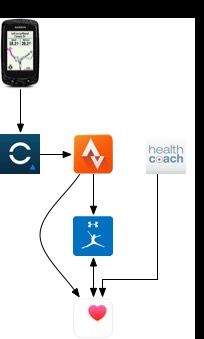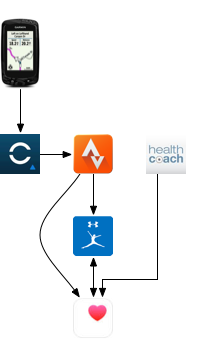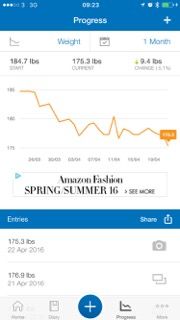A personal health app architecture
As a data geek I love the quantified self movement. Understanding my body, my health and how to improve it with insights is super cool. Having so much information can cause a signal v noise issue, but managed properly can give real insights and help me make better decisions.

There is no doubt that technology can improve the way we live our lives and improve our health and wellbeing but we still have to take the actions. I haven’t seen an app out there that can improve your health just by installing it, I am sure some claim they can though. You have to use the capabilities and information it provides to make decisions and act accordingly.
Connecting the things
As a data geek I love the quantified self movement. Understanding my body, my health and how to improve it with insights is super cool. Having so much information can cause a signal v noise issue, but managed properly can give real insights and help me make better decisions.
I have a simple interconnected architecture that allows me to do just that.

My Personal Health Application Architecture
Garmin Device
The Garmin receives real time information from four sensors when I cycle. My heart rate in beats per minute, cadence in revolutions per minute, speed in kph and power data in watts. These data points are captured ever second when I am out cycling.
In addition the Garmin also records my GPS position (it has a satellite navigation too, which is great for riding new routes) and transmits this via my phone to the Garmin connect application on my phone. This updates Garmin live view with the all this data so my wife can see where I am in real time and that my heart is still beating, a good thing for her (and me).
Strava
At the end of a ride, my Garmin notifies Garmin connect which then uploads the completed ride and all the data points to Strava, where I am able to track rides, connect with friends and look at various statistics around my performance. This all happens in real time without pressing a button. Data is also sent to My Fitness Pal to record how many calories I have burned and transmits the same data to Apple Health Kit.
Health Coach
This is an app that communicates with my digital scales, I just have to stand on them with the app open and the scales transmit my weight, body fat %, BMI, Water % and Muscle %. Health Coach sends all this data to Apple Health Kit app. These scales cost about £20, I think I picked them up from a Lidl. They are one of the best purchases I have made that is health related in terms of value.
Apple Health Kit
This brings everything together as most applications now talk with it either directly or by proxy. Although I rarely use it as anything other than an integration hub for getting data from Health Coach into MyFitnessPal.
My Fitness Pal
This is where I manage most of my health and have a daily view. I track what I eat and drink in this application and balance my macronutrients levels around 40% Protein, 30% Carbohydrates and 30% Fats. I can see my weight chart, and see how much of a calorific deficit my body is in each day when the exercise calories burned are deducted from my total personal permitted allowance.

Apple Watch
I don’t really have much to say about this other than I have one. It tracks my heart rate throughout the day and steps/activity levels etc but it doesn’t really do anything for me, it adds very little in terms of insights, causality analysis. Perhaps that is because I chose to focus my insights on MyFitnessPal instead of Apple Health Kit but that is because I am already there logging my food and drink intake. Others may use it differently, for me it tells me the time when it’s not run out of battery and interrupts me just as much as my phone.
Using tools to perform complicated tasks
All this sounds rather complex, I assure you it’s not and you can have most of this setup fairly easily. What it gives me is such an informed view of my body and how it reacts to changes I can predict with a high degree of accuracy what a heavy night out will do to my body in terms of weight gain (usually water retention due to dehydration) and how my body responds to my cycling commutes and my cycling hobby activities.
Over the last 5 weeks I decided to drop 10 lbs to improve my power to weight ratio of watts per kilogram on the bike. Here is what I achieved.

I have decided to press on and lose another 10 lbs, so it’s just a case of adjusting my macronutrients and repeating.
If you decide to follow this path good luck, although you won’t need it, it’s science.